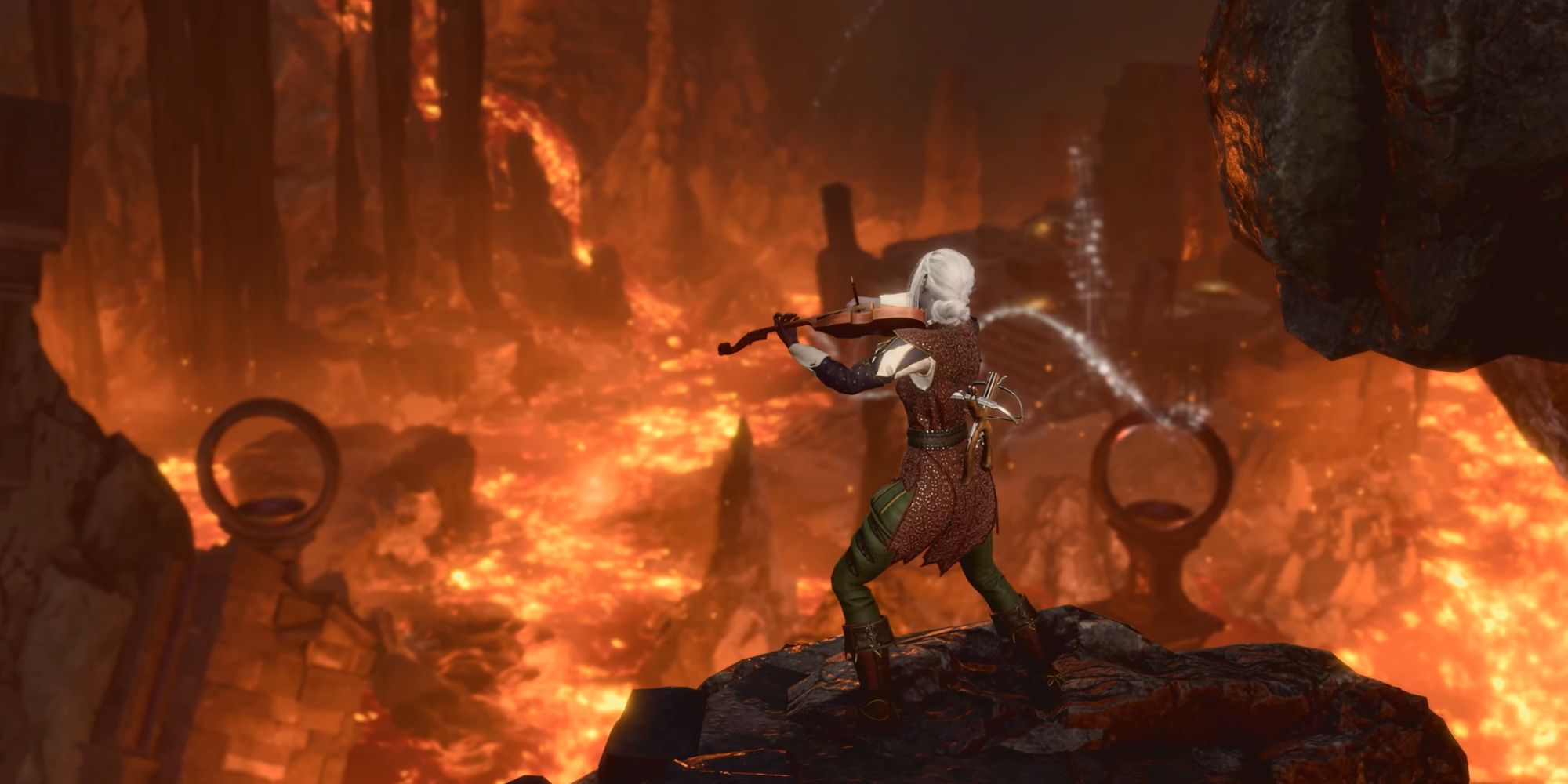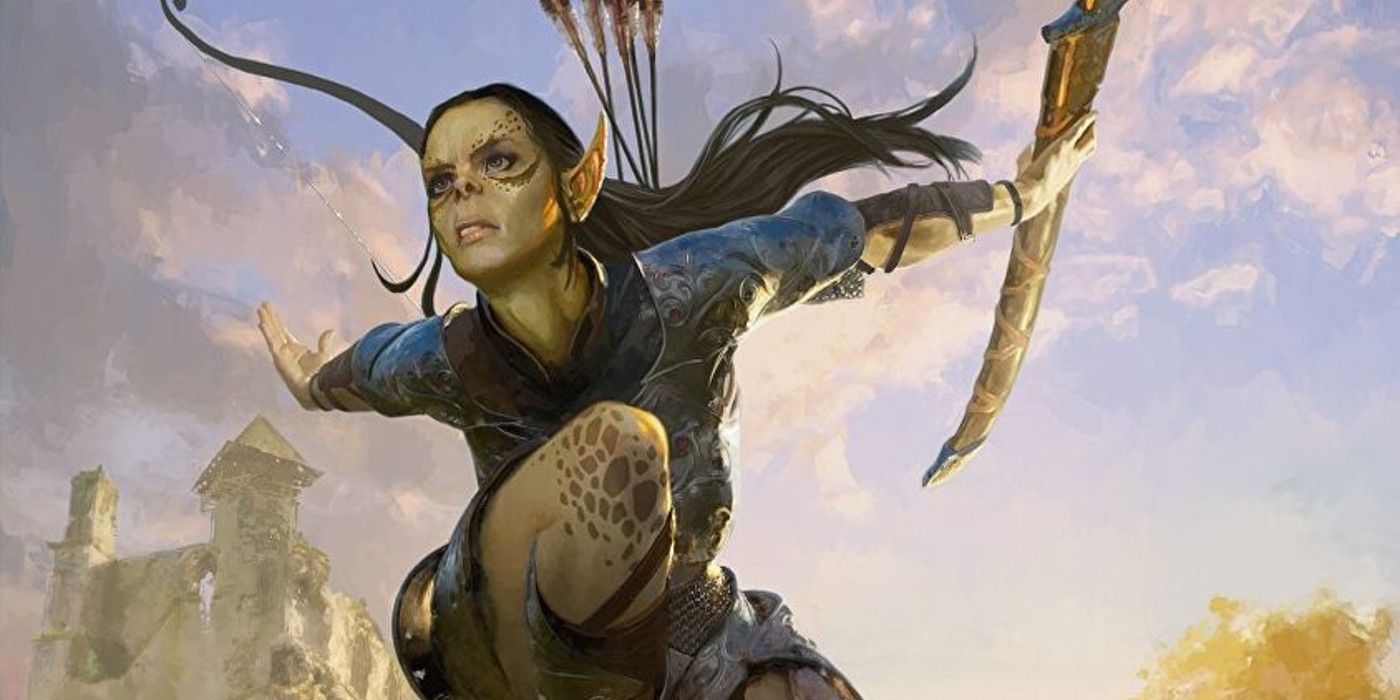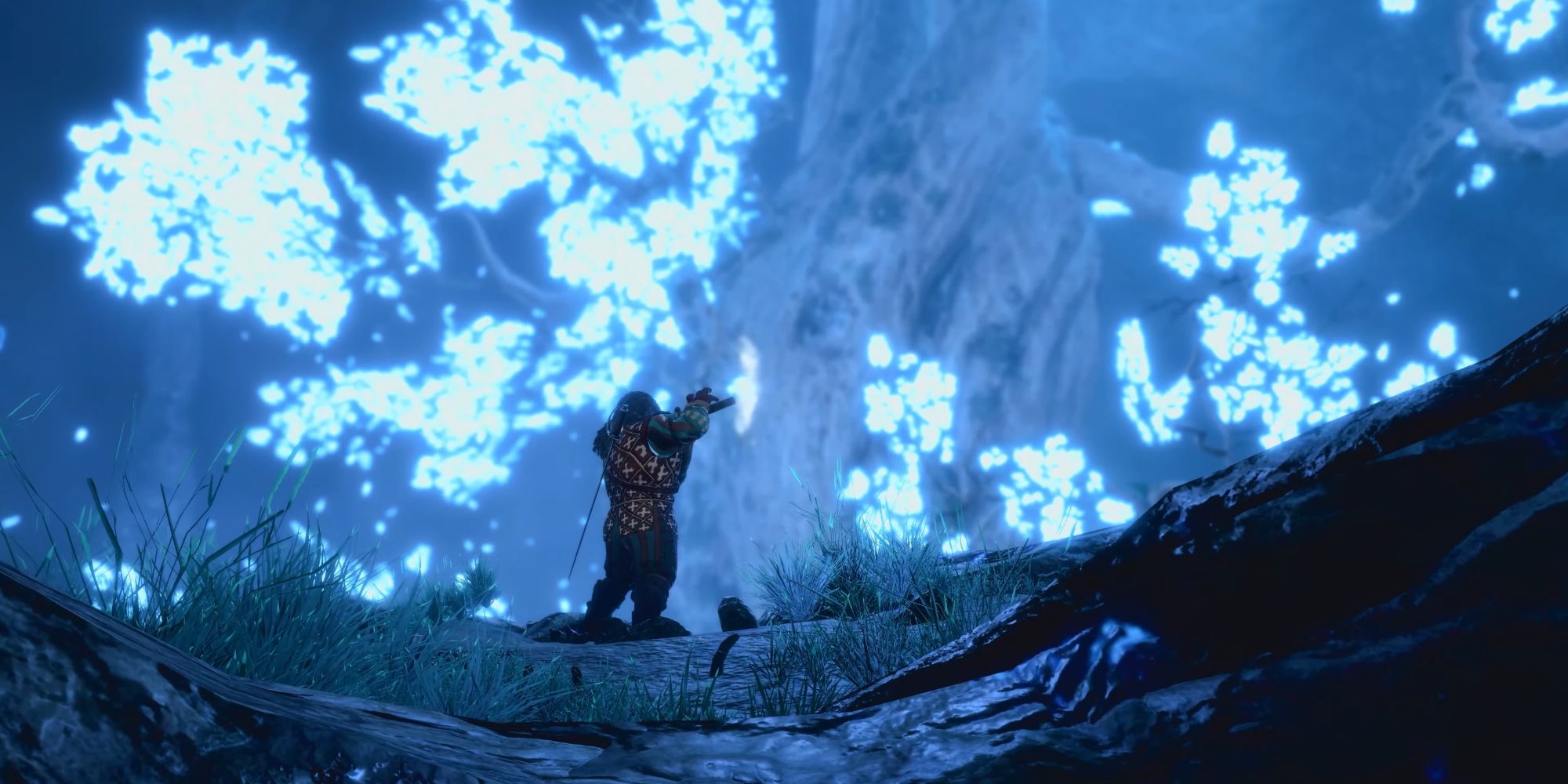Baldur's Gate 3: How to Build a Bard | Screen Rant

Patch 8 for Baldur's Gate 3 introduces the new Bard class. This magic caster draws from music and creativity to cast spells and help teammates. But they are also an extremely balanced class, able to weave in and out of melee combat when needed.
As a full magic-user, Bards may initially seem like they are stepping on the toes of Baldur's Gate 3 party members Gale and Shadowheart. However, a Bard's selection of spells are mostly focused on direct party buffs and debilitations on enemies. With each level up, it becomes easier to make a cohesive party that only benefits from a Bard's presence.
Because Bards are so flexible, it can also be possible to make a very weak main character if not specialized in a single way. Players who have never used a Bard in Dungeons and Dragons - or the very mechanically similar Pathfinder: Wrath of the Righteous - should make separate saves before every level up. This can make it quick and painless to re-plan out and fix a build idea.

As the infamous "Jack of all Trades" class, Bards have many great options for race, ability scores, and skills. Unlike the first two Baldur's Gate games that used 2nd Edition Dungeons and Dragons rules, the 5th Edition Bard slightly favors magic. But like a Baldur's Gate 3 Cleric, Bards can easily use those spells to make themselves a powerhouse frontline fighter.
Human
As the most balanced race, Humans are iconic as the equally balanced Bard class. They will gain +1 to every ability score. This is perfect for players that truly want their main character to fight, skulk, or cast magic depending on the situation. However, this versatility also means that they will always be slightly weaker than at least one of the other racial options.
Wood Half-Elf
Half-Elves gain +2 Charisma and another +2 in another ability score of the player's choosing. They also can't be put to sleep by Baldur's Gate 3 magic and have an advantage on Charm Saving Throws. Finally, the Wood subrace gives them increased movement speed and automatic proficiency with Stealth. This racial selection will make Bards into incredible spell casters that can easily position themselves on the battlefield.
Lightfoot Halfling
Halflings gain +2 Dexterity and can reroll a Baldur's Gate 3 critical failure (1 on a D20 check) but must take the new results. As a Lightfoot, they also gain +1 Charisma and proficiency with Stealth. This makes Lightfoot Halfling Bards similar to Wood Half-Elves, but with an emphasis on finesse weapons or bows instead of pure power. Unfortunately, they are also much slower due to their small size, making it hard to cross great distances each turn.
Zariel Tiefling
All Tieflings are resistant to fire, taking half damage to flame-based attacks; they also have a dark vision of 12 m. The Zariel subrace also grants +1 Strength, +2 Charisma, and use of the Thaumaturgy cantrip. When active, this gives an advantage of Intimidate and Performance for ten turns. Zariel Tiefling Bards will shine as both mages and warriors, making them one of the best options for the College of Valor subclass.
Githyanki
The Gith are a powerful melee option, granting +2 Strength and +1 Intelligence, along with free proficiency with Medium Armor and the Greatsword. They also gain the Mage Hand cantrip during character creation and the Jump spell at level 3. These bonuses do not make them killing machines like the Baldur's Gate 3 Barbarian, but will still be a ferocious Bard. However, many of these features are redundant as a Valor Bard, so players may want to consider making Githyanki members of the College of Lore.

Bards utilize Charisma as their spellcasting ability score, determining their aim and difficulty class to resist. Like a Baldur's Gate 3 Sorcerer, Bards have fully memorized their spells and do not learn more due to a high casting stat. They are also proficient with simple weapons and two powerful martial melee weapons, the longsword and rapier. Depending on the weapon choice, players should increase either Strength or Dexterity and dump the other. With a D8 hitdice, a moderate amount of Constitution is also important, with 14 being a good median.
Universal Bard Features
Bards are extremely versatile as they can select any three Skills to be proficient with. This, in turn, makes every Background viable, though in both cases, Charisma-based Skills are best suited. This includes Deception, Persuasion, Intimidation, and Performance. Backgrounds covering said Skills are Charlatan, Criminal, Entertainer, Guild Artisan, Noble, or Soldier.
The main Bard class feature is Bardic Inspiration. The move is a standard action that gives an ally in range +1d6 to their next Attack Roll, Saving Throw, or Ability Check. This will mostly be helpful for characters that are in the thick of the fight - both attacking and being in the range of enemy spells - like Astarion and Lae'zel. At level 2, they also learn Song of Rest, which differs from the tabletop rules and instantly grants the effects of a Baldur's Gate 3 short rest.
College of Lore
The Lore subclass makes Bards much more versatile party support characters. They automatically gain proficiency in Arcana, Intimidation, and Sleight of Hand. Compared to the College of Valor, this also expands their Expertise selection to those three skills, though they can still only pick two total skills. Lore also gives a new action, Cutting Words, which penalizes an enemy with -1d6 to Attack Rolls, Damage Rolls, and Ability Checks. This can be potent for protecting the team from high amounts of damage.
College of Valor
The second Bardic College is Valor, which is geared toward physical fighting. The Bard will gain proficiency with Medium Armor, Shields, and all Baldur's Gate 3 Martial Weapons. But with only average hitpoints, diving into melee like a Fighter or Barbarian is risky. Valor Bards should still first rely on spells or consider using their new features to attack with a longbow. It is even more advantageous to power up allies as Valor upgrades Bardic Inspiration to Combat Inspiration. The affected alley can now choose to gain +1d6 to their damage dice or +4 to their Armor Class for one round.
While these are the most potent Bard options, Baldur's Gate 3 is still a versatile and open roleplaying game. When playing on normal difficulty or lower, it is possible to get away with suboptimal builds and see the story from a new perspective. There is still much excitement from making a Bard out of a conservative Dwarf, sea-faring Sailor, or other atypical choices.
Baldur's Gate 3 early access is available on PC.
Source: Screenrant
Post a Comment